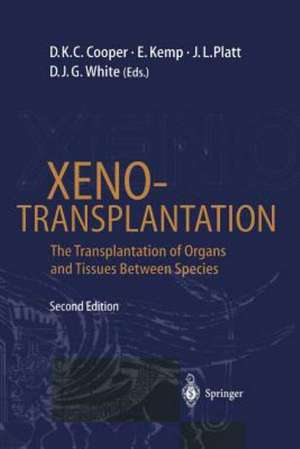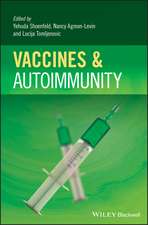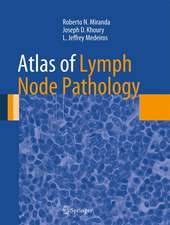Xenotransplantation: The Transplantation of Organs and Tissues Between Species
Editat de David K.C. Cooper, Ejvind Kemp, Jeffrey L. Platt, David J.G. Whiteen Limba Engleză Paperback – 7 ian 2012
Preț: 1126.82 lei
Preț vechi: 1186.12 lei
-5% Nou
Puncte Express: 1690
Preț estimativ în valută:
215.65€ • 224.30$ • 178.03£
215.65€ • 224.30$ • 178.03£
Carte tipărită la comandă
Livrare economică 14-28 aprilie
Preluare comenzi: 021 569.72.76
Specificații
ISBN-13: 9783642644603
ISBN-10: 3642644600
Pagini: 892
Ilustrații: XXXIV, 854 p. 12 illus. in color.
Dimensiuni: 155 x 235 x 47 mm
Greutate: 1.23 kg
Ediția:2nd ed. 1997. Softcover reprint of the original 2nd ed. 1997
Editura: Springer Berlin, Heidelberg
Colecția Springer
Locul publicării:Berlin, Heidelberg, Germany
ISBN-10: 3642644600
Pagini: 892
Ilustrații: XXXIV, 854 p. 12 illus. in color.
Dimensiuni: 155 x 235 x 47 mm
Greutate: 1.23 kg
Ediția:2nd ed. 1997. Softcover reprint of the original 2nd ed. 1997
Editura: Springer Berlin, Heidelberg
Colecția Springer
Locul publicării:Berlin, Heidelberg, Germany
Public țintă
ResearchCuprins
I Introduction.- 1 Introduction.- II Immunobiology of Xenograft Rejection.- 2 Hyperacute Xenograft Rejection.- 3 Role of Natural Antibody-Antigen Interactions in Xenotransplantation.- 4 Major Carbohydrate Xenotransplantation Antigens.- 5 Natural Antibody Polymorphism and Anti-Gal?1–3Gal Antibodies.- 6 Role of Complement in Xenograft Rejection.- 7 Genetic Control of Humoral Responses to Xenografts.- 8 Mechanisms of Delayed Xenograft Rejection.- 9 Anti-?galactosyl (Anti-Gal) Antibody Damage Beyond Hyperacute Rejection.- 10 Human Natural Killer Cells and Natural Antibodies Recognize Overlapping Molecular Structures on Discordant Xenogeneic Endothelium.- 11 Hemostasis in Xenotransplantation.- 12 Mechanisms of Cellular Xenograft Rejection.- 13 Human T Cell Response to Porcine Tissues.- 14 Cellular Interaction in Discordant Xenotransplantation.- 15 Immunoprivileged Sites for Alio- and Xenotransplantation.- 16 Immunobiology of Xenotransplantation in Rodents.- III Pathology of Xenograft Rejection.- 17 Histopathology of Kidney Xenograft Rejection.- 18 Histopathology of Cardiac Xenograft Rejection.- 19 Mechanism of Discordant Cardiac Xenograft Rejection - An Alternative Point of View Based on Ultrastructural Observations.- 20 Histopathology of Liver Xenotransplantation in the Nonhuman Primate.- 21 Immunopathology of Discordant Xenograft Rejection.- IV Experimental Xenotransplantation Between Closely Related Species.- 22 Experimental Concordant Kidney Xenotransplantation in Primates.- 23 Experimental Concordant Liver Xenotransplantation in Nonhuman Primates.- 24 Use of Tacrolimus (FK506) and Antimetabolites as Immunosuppressants for Xenotransplantation Across Closely Related Rodent Species.- V Experimental Xenotransplantation Between Widely Disparate Species.- 25 Roles ofAnti-?Gal Antibody and Oligosaccharide Therapy in Xenotransplantation.- 26 Removal of Natural Antibodies by Immunoadsorption: Results of Experimental Studies.- 27 Neutralization of the Cytotoxic Effect of Anti-?Gal Antibodies with Monoclonal Anti-idiotypic Antibodies.- 28 Designer Tissues and Organs: Mouse to Man.- 29 Use of Anti-? Monoclonal Antibodies in Xenotransplantation: A Potential Approach To Overcome Vascular Rejection.- 30 Use of Intravenous Immunoglobulin as a Therapeutic Approach To Prevent Rejection Between Widely Disparate Species.- 31 Control of Complement-Mediated Tissue Damage by ?-Globulin: Application in Xenotransplantation.- 32 Prolongation of Discordant Xenograft Survival by Cobra Venom Factor.- 33 Therapeutic Effect of Soluble Complement Receptor Type I in Xenotransplantation.- 34 Immunobiology of Pig-to-Baboon Lung Xenotransplantation.- 35 Experimental Lung Xenografting: General Considerations.- 36 Newborn Pig-to-Baboon Cardiac Xenotransplantation: A Model of Delayed Xenograft Rejection.- 37 Total Lymphoid Irradiation: Immunosuppressive Therapy for Xenotransplantation.- 38 Xenogeneic Tolerance Through Hematopoietic Cell and Thymic Transplantation.- 39 Chimerism and Tolerance as an Approach to Xenotransplantation.- VI Experimental Pancreatic Islet Cell Xenotransplantation.- 40 Introduction.- 41 Isolated Pancreatic Islet Xenografting.- 42 Recent Approaches to the Isolation of Adult Porcine Islets of Langerhans.- 43 Xenotransplantation of Encapsulated Pancreatic Islets.- VII Pharmacologic Immunosuppression in Xenotransplantation.- 44 Pharmacologic Immunosuppressants in Xenotransplantation.- 45 Use of Brequinar Sodium To Prevent Xenograft Rejection.- 46 Leflunomide and the Malinonitriloamides in Xenotransplantation.- VIII Genetic Engineering ofthe Xenograft Donor.- 47 Use of Transgenic Animals as Xenotransplant Donors.- 48 Engineering of Xenografts To Provide Organs for Human Transplantation.- 49 Effect of Transgenic Expression of Human Decay Accelerating Factor on the Inhibition of Hyperacute Rejection of Pig Organs.- 50 Overcoming the Anti-Gal?(1–3)Gal Reaction To Avoid Hyperacute Rejection: Molecular Genetic Approaches.- 51 Gal?1–3Gal Xenoepitope: Donor-Targeted Genetic Strategies.- IX Aspects of Xenotransplantation in Humans.- 52 Evolutionary obstacles to xenotransplantation.- 53 Xenotransplantation and Infectious Diseases.- 54 Nucleic Acid-Based Discovery Techniques for Potential Xenozoonotic Pathogens.- 55 Comments on Ethics in Human Xenotransplantation.- X Clinical Experience.- 56 Clinical Xenotransplantation - A Brief Review of the World Experience.- 57 Extracorporeal Xenogeneic Liver Perfusion for the Treatment of Hepatic Failure.- 58 Baboon Liver Transplantation in Humans: Clinical Experience and Principles Learned.- 59 Clinical Islet Xenotransplantation.- 60 Conceptual Scientific Development of the Xenotransplantation Project in Goteborg.
Recenzii
"The new, revised and extended second edition provides a complete overview of this promising and exciting field. This work uniquely puts into perspective the essential features of xenotransplantation and its, as yet, unresolved problems." Transplant International
Textul de pe ultima copertă
The success of transplantation in the treatment of human disease has increased the demand for organs and tissues far beyond the available supply. Xenotransplantation - the use of animals as donors - is viewed increasingly as the solution to this problem. Research into xenotransplantation has intensified greatly in the past five years since the first edition of this book was published. This second edition reflects this activity and provides a comprehensive overview of the current state of knowledge of the immunobiology of xenograft rejection and of the many therapeutic options being explored. Authored by the world's leading researchers, the volume is essential reading for anyone interested in the medical, scientific or ethical aspects of xenotransplantation. Many believe that we are on the threshold of clinical trials using genetically engineered animals as donors of organs. If successful, the rewards of clinical xenotransplantation will be immense and will represent one of the greatest medical advances of the modern era.












